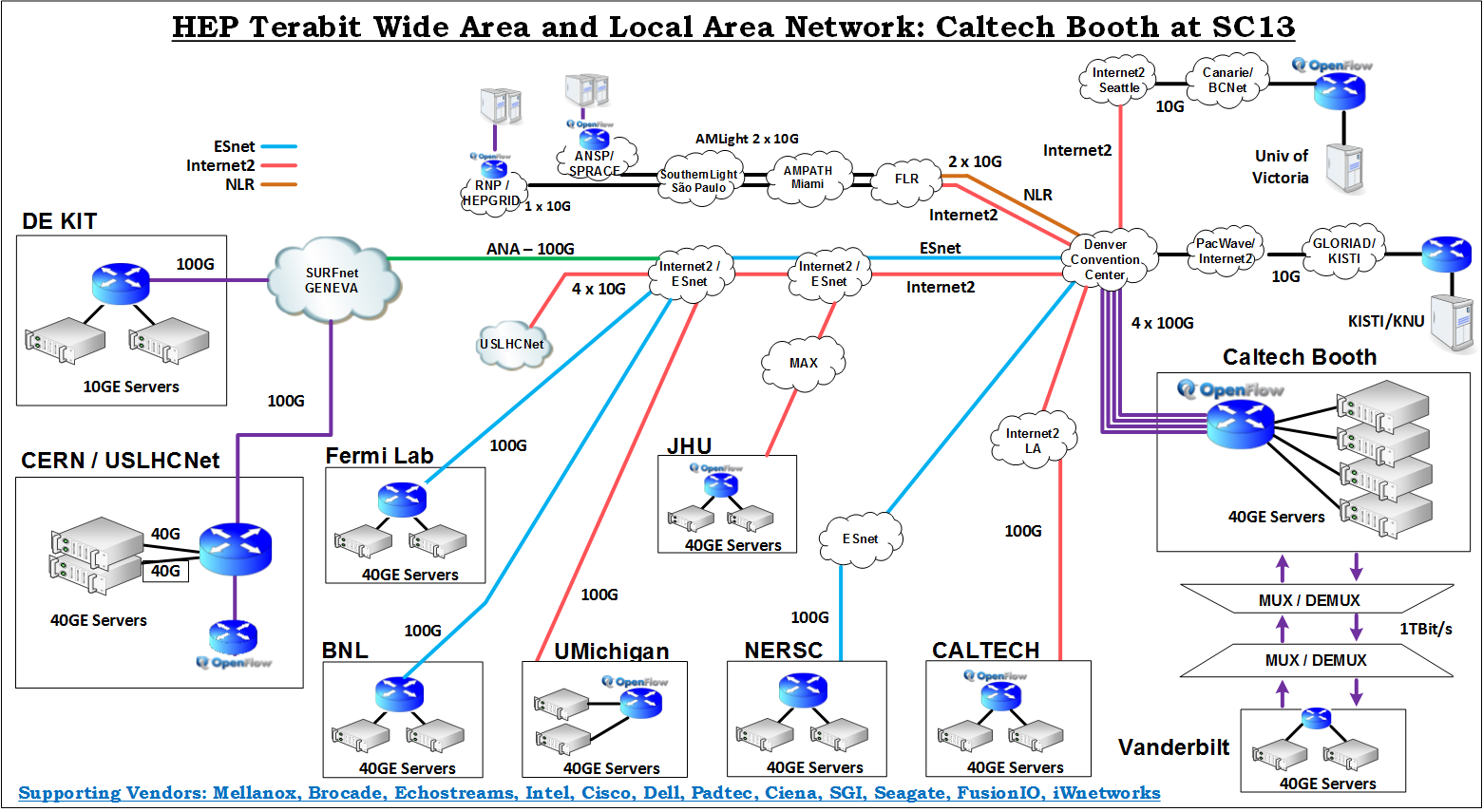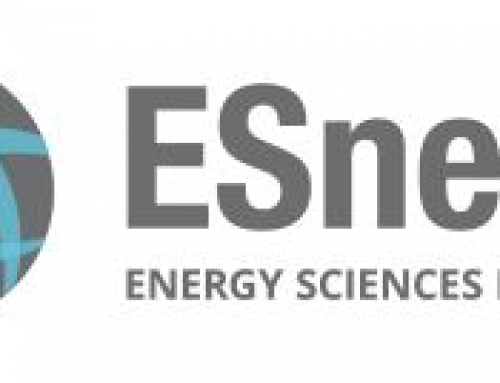Miami, Florida, February 3, 2014
Florida International University FIU’s AmLight project supported two long-haul network experiments that spanned the continents of South and North America. AmLight allocated up to 20Gbps of bandwidth capacity between Miami and São Paulo. With support from Florida LambdaRail (FLR), National LambdaRail (NLR) and Internet2, the 20Gbps of bandwidth capacity was extended from Miami to the SC13 show floor in Denver, Colorado. Layer2 lightpaths were provisioned from São Paulo to the show floor in Denver, overlayed on the AmLight, FLR, NLR and Internet2 AL2S backbone networks. The network diagram in Figure 1 illustrates the wide area and local area networks for High-Energy Physics (HEP) deployed by the Caltech team and partners, including the connections for the LHC CMS Tier2 Computing Centers in Rio de Janeiro (HEPGRID) and São Paulo (SPRACE), provided respectively by RNP and ANSP through the International Exchange Points in São Paulo (SouthernLight) and Miami (AMPATH), FLR, NLR and Internet2 AL2S.
Figure 1 – HEP Terabit WAN and LAN for the Caltech Booth at SC13
The wide area network shown in Figure 1 represents the collaboration of many geographically distributed research and education networks, and computation and storage facilities, to form a global testbed environment, in order to conduct at-scale network experiments. The two experiments AmLight supported were (a) the GLIF Automated GOLE Network Services Interface (NSI) version 2.0 protocol; and (b) Openflow-based Multipath Networks in the WAN. The following is a description of these experiments and their results.
For full press release click here.





